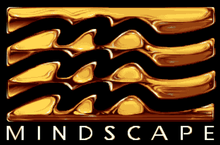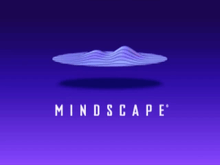Mindscape
 2001-2010 logo | |
| Private company | |
| Industry |
Computer software Software publishing |
| Founded | 1983 |
| Defunct | 2011 |
| Headquarters | Boulogne-Billancourt, France |
Key people | Jean-Pierre Nordman, CEO |
| Revenue |
|
| Subsidiaries | The Software Toolworks |
| Website | Mindscape.com |
Mindscape Interactive Inc. was an international software publishing company, previously part of The Learning Company[1] and later affiliated with Electronic Arts. As of 2004, the group had offices in Europe, Asia, Australia and South America. It had an annual turnover of €38 million and employed 150 people. Mindscape published and distributed educational and lifestyle games and software. Its most notable titles include Law & Order: Criminal Intent and Lego Island.
History


Mindscape began in 1983 as a software publisher in Northbrook, Illinois. Founded by English-born Roger M. Buoy, the company established its early roots developing educational software for the TI-99/4A and the Apple II. It later branched out into entertainment software by becoming a Lucasfilm licensee, publishing the Indiana Jones computer games before they were taken in-house by Lucasfilm Games with Indiana Jones and the Last Crusade. It also released Text adventures tied to famous authors like Dick Francis and Ray Bradbury, and a controversial game from Tom Snyder Productions called Sub Mission. The latter required gamers to purchase a replacement disk if they lost the mission three times.
Under creative director Sandy Schneider, the company became one of the earliest publishers of software for the Macintosh, publishing the seminal Chris Crawford game, Balance of Power. It also received accolades for its publishing of the innovative Apple Macintosh adventure games, the MacVentures, which were developed by ICOM Simulations, and included Deja Vu, Uninvited, and Shadowgate. It also published the first 3D game for home computers, David Alan Smith's The Colony. It also published several of the early Macromind products, namely Graphic Works and Comic Works.
In 1984 Mindscape worked closely with Commodore in developing some of the initial applications for the Commodore Amiga. The company participated in the 1985 release of the Amiga that featured Andy Warhol and Debbie Harry.
In 1985 Mindscape became a Nintendo licensee and published video games such as The Terminator for the Nintendo Entertainment System (NES) and Paperboy for both Nintendo's NES and Game Boy platforms. Paperboy becoming a huge hit worldwide selling over 2 million copies on the NES alone.
During the late 1980s, Mindscape was unique in the software entertainment arena by establishing a global network. Buoy opened offices around the world and installed seasoned managers to run them. By 1990, Mindscape had offices in Sydney, Australia; Chiba, Japan; Sussex, England; and Normandy, France.
In 1988 Mindscape became a public company raising $9.6 million. It was one of the first companies to have a successful IPO after the stock market crash of October 19, 1987.
Mindscape was famous for its Rock 'n Roll parties at Chicago's Summer Consumer Electronics Show (the trade show prior to E3) where it released its new products and entertained its customers. The parties featured classic stars like Meat Loaf, Jay and the Americans, Bo Diddley, Del Shannon, Sam and Dave and Ricky Nelson.
In 1990 Les Crane's The Software Toolworks acquired Mindscape, primarily for the Nintendo license.[2] The company held one last Summer Consumer Electronics Show parties where Dudley Moore introduced the Miracle Piano Teaching System, an electronic learning system for the piano. However, The Software Toolworks almost sank after it over-ordered the piano hardware for Miracle Piano Teaching System, was not able to sell through copies of the product very quickly, and was stuck with a large inventory. Roger Buoy left the company in 1992 to pursue other entrepreneurial activities.
The company became involved in another round of mergers and headquarters moved to Novato, California, in Marin County north of San Francisco. It started out publishing software for Heath/Zenith personal computers. Early products for The Software Toolworks included Mychess and the C/80 C compiler for CP/M. The two most popular products were the very long-lived series Mavis Beacon Teaches Typing and the Chessmaster series of computer games. It is also known for its contribution in the development of the Lego Island PC game series.
In 1992, Mindscape created and released the isometric fantasy role-playing game Legend (known as The Four Crystals of Trazere in the United States) for MS-DOS, Amiga and Atari ST. Following some success worldwide, a sequel Worlds of Legend: Son of the Empire was released for MS-DOS and Amiga in 1993.
In 1993, The Software Toolworks developed Wing Commander for the Super Nintendo Entertainment System under the Mindscape brand in conjunction with Origin Systems at a time when The Software Toolworks was downsizing and struggling to survive. Sales from the game heavily exceeded expectations and the resulting revenue brought the company back from the brink (as evidenced by its share price which had fallen to $2 per share and was ultimately brought back up to $12 a share before the company was purchased).
In 1997, the internal development department was shut down. Through an undisclosed deal with Electronic Arts UK, most of the development staff, and the game they were developing (which was close to completion) – Warhammer: Dark Omen – was moved to EA UK's offices in Guildford, Surrey, and released in early 1998.
Below is a timeline of events occurring from 1993 to 2011:
- 1993: Purchases wargames publisher SSI and changes name to Mindscape.
- 1994: Sold to Pearson PLC for $503 million.
- 1998: Sold to The Learning Company for $150 million. Mindscape also purchases PF Magic.
- 1998: Sold to Mattel for around US$3.6 billion, causing a strong impact to Mattel's stock price and the ouster of its CEO. Mattel subsequently sells Mindscape to Gore Technology Group for just a share of the profits that Gores could obtain by selling the properties.
- 2001: Mindscape is made a separate company in following the purchase of the international division of The Learning Company from the Gore Technology Group by Jean-Pierre Nordman.
- 2002: Montparnasse Multimedia is purchased by Mindscape.
- 2005: Mindscape purchases the studio Coktel Vision – owners of the brands ADI and Adiboo – from Vivendi Universal Games
- 2006: Ubisoft continues to publish Chessmaster titles. Broderbund is the new publisher of Mavis Beacon Teaches Typing.
- 2011: Mindscape has shut down their last studio and retreats from the gaming industry.[3]
- 2011: Game publisher Anuman Interactive acquired the Montparnasse Multimédia and Alsyd catalogues, as well as the Horse Star license, all formerly operated by Mindscape.
Software published
The following is a list of software programs with their year that were published by the company.
- Billy Hatcher and the Giant Egg (PC) (2006)
- Counter Action (1997)
- Angel Devoid: Face of the Enemy (1996)
- Prince of Persia (1989)
- Prince of Persia 3D (1999)
- SimAnt[4] (1991)
- SimEarth (1990)
- SimLife (1992)
- Outlander (1992)
- Moonstone: A Hard Days Knight (1991)
References
- ↑ http://www.mobygames.com/company/mindscape-international-ltd
- ↑ "Software Toolworks Acquires Mindscape". Computer Gaming World. January 1990. p. 64. Retrieved 15 November 2013.
- ↑ Gamasutra article on Mindscape
- ↑ Teaching And Learning Primary Science With Ict. New York, NY: The Editors and Contributors. 2006. ISBN 0335 21894 6. Retrieved 2014-01-23.
External links
| ||||||||||||||||||||||||||||||||||